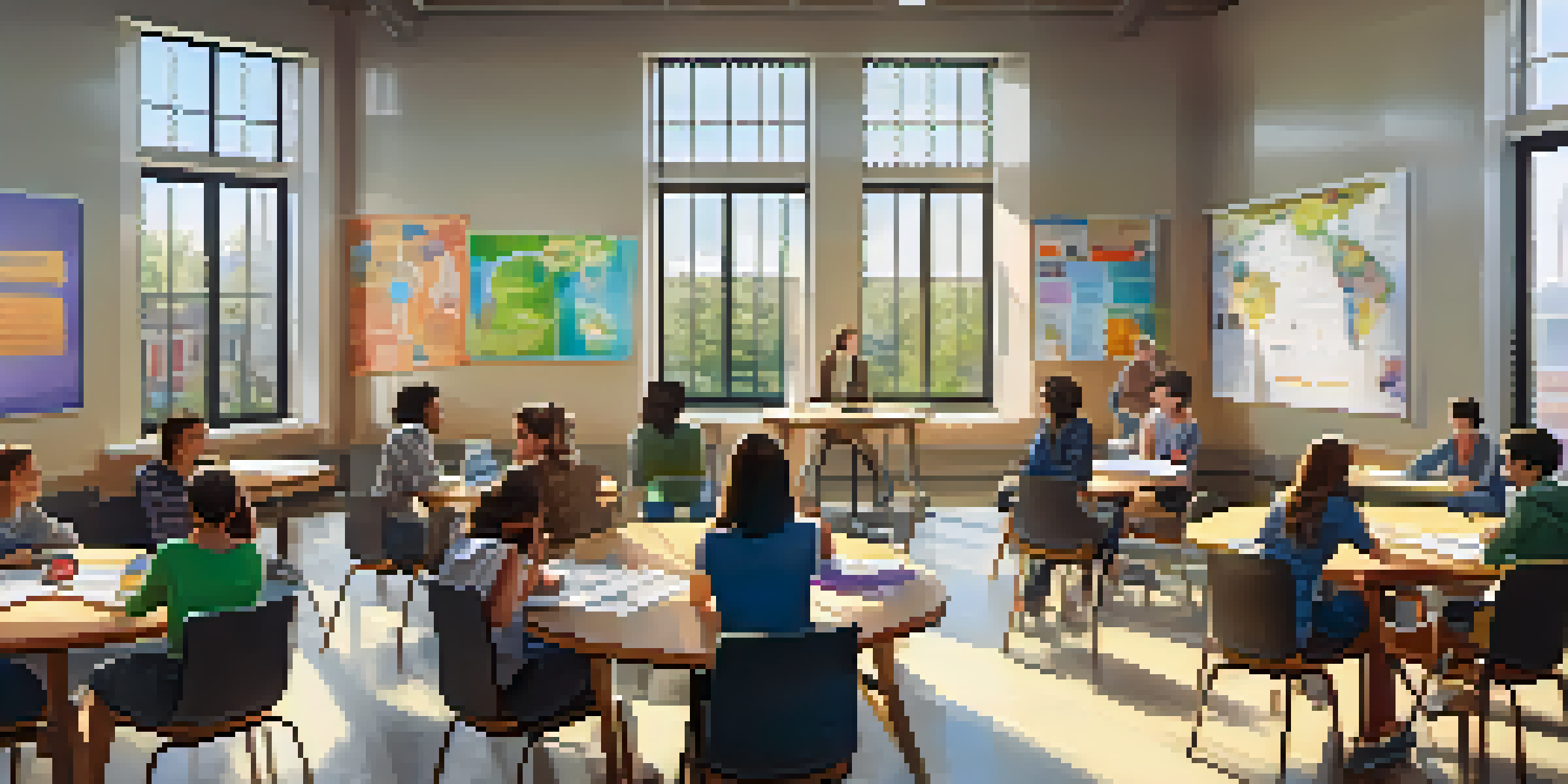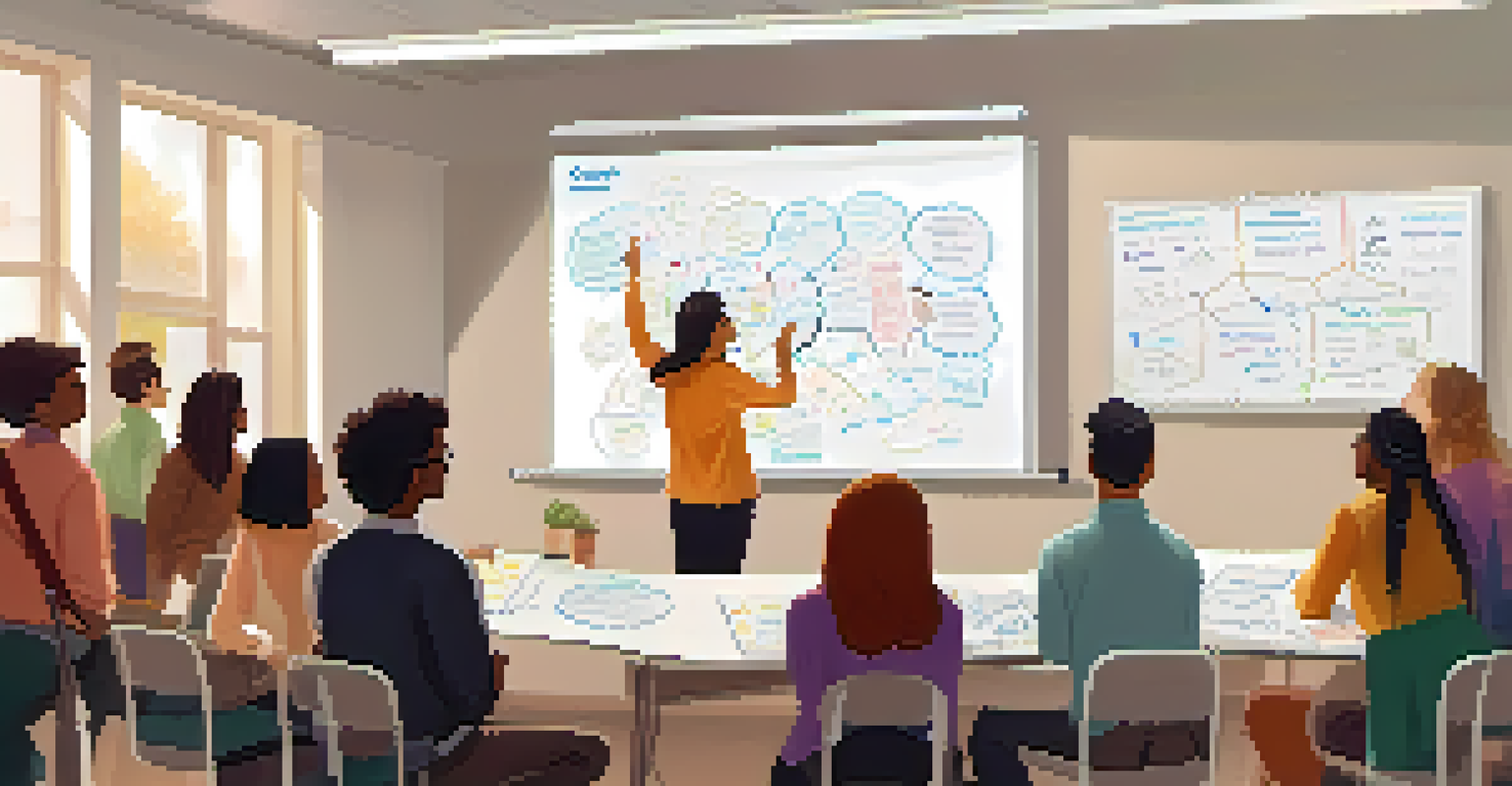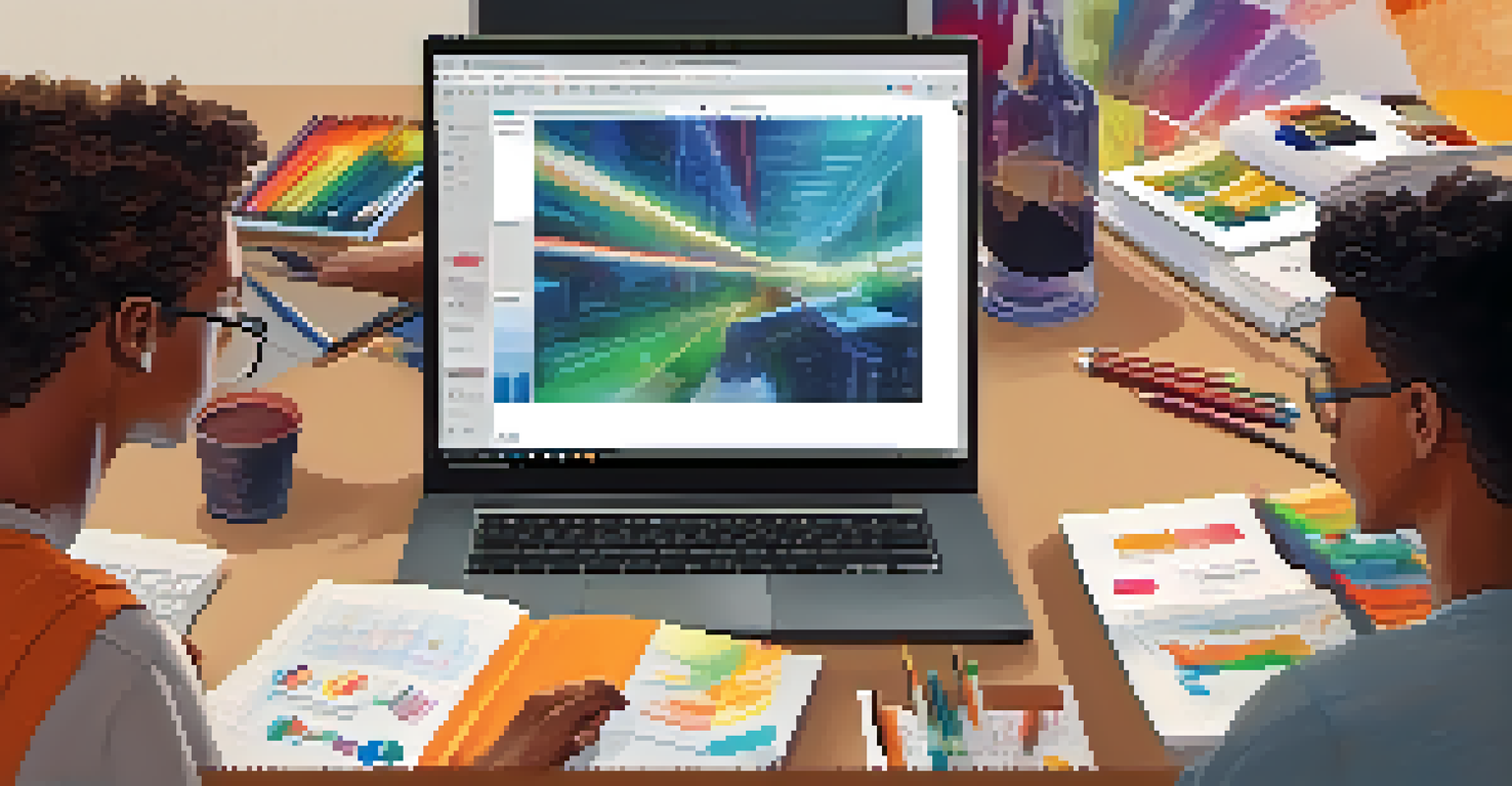Flipped Classroom: Building a Collaborative Learning Culture

Understanding the Flipped Classroom Concept
The flipped classroom is an innovative teaching approach that reverses traditional learning. Instead of introducing new material during class time, students learn foundational concepts at home, often through videos or readings. This method allows class time to be dedicated to discussions, problem-solving, and collaborative projects.
Education is not the filling of a pail, but the lighting of a fire.
By flipping the classroom, educators aim to create a more engaging learning environment. Students come prepared with questions and insights, transforming the classroom into a dynamic space for interaction. This shift not only enhances understanding but also fosters a sense of community among learners.
This approach encourages students to take ownership of their learning. As they engage with the material at their own pace, they can revisit complex topics before coming to class. This self-directed learning builds confidence and prepares students to contribute meaningfully during collaborative activities.
Benefits of Collaborative Learning in Classrooms
Collaborative learning offers numerous advantages that enhance educational outcomes. It helps students develop critical thinking skills as they analyze different perspectives and solve problems together. The exchange of ideas promotes deeper understanding and retention of material.

Moreover, working in groups nurtures essential soft skills like communication and teamwork. These skills are invaluable in both academic and professional settings, as they prepare students for real-world challenges. When learners collaborate, they also learn to respect diverse viewpoints, fostering a more inclusive environment.
Flipped Classroom Enhances Engagement
This innovative approach allows students to learn at their own pace at home, fostering a more interactive and collaborative classroom environment.
Additionally, collaborative learning can boost motivation and engagement. When students work together, they often feel more invested in their peers' success. This shared responsibility creates a supportive atmosphere where individuals are encouraged to push each other toward achieving their goals.
Creating a Collaborative Learning Culture
To build a collaborative learning culture, educators need to establish trust among students. This can be achieved by encouraging open communication, where students feel safe to express their thoughts and opinions. Trust fosters an environment where learners are more willing to take risks and share their ideas.
Collaboration allows us to know more than we are capable of knowing by ourselves.
Incorporating group projects and peer assessments can also enhance collaboration. These activities not only promote teamwork but also hold students accountable for their contributions. When learners know they are part of a team, they are more likely to engage and invest in the success of the group.
Additionally, providing opportunities for reflection can deepen collaborative experiences. After group activities, discussions about what worked and what didn’t can help students understand their roles in the learning process. This reflection not only enhances their collaborative skills but also contributes to personal growth.
Technology's Role in the Flipped Classroom
Technology plays a crucial role in the flipped classroom model. Various digital tools and platforms enable educators to share resources easily and facilitate communication among students. From video lectures to collaborative software, technology enhances accessibility and enriches the learning experience.
For instance, platforms like Google Classroom or Edmodo allow students to interact outside of class. They can discuss topics, share resources, and ask questions in a virtual space. This continuous interaction helps maintain engagement and reinforces learning beyond the traditional classroom setting.
Collaboration Builds Essential Skills
Working together in groups not only enhances critical thinking but also nurtures vital soft skills like communication and teamwork.
Moreover, technology offers diverse ways to present information. Educators can utilize multimedia resources, such as podcasts or interactive quizzes, catering to different learning styles. This variety not only keeps students interested but also allows them to engage with the content in a way that resonates with them.
Assessing Student Progress in a Flipped Classroom
Assessment in a flipped classroom differs from traditional methods, focusing more on formative rather than summative evaluations. Educators can use various tools to gauge understanding throughout the learning process, allowing for timely interventions. This ongoing assessment helps identify areas where students may need additional support.
Peer assessments can also play a significant role in evaluating collaborative work. When students assess each other’s contributions, they gain insights into their strengths and weaknesses. This practice not only fosters accountability but also encourages constructive feedback, enhancing the collaborative culture.
Furthermore, self-reflection is a powerful assessment tool in this learning model. Encouraging students to reflect on their learning experiences helps them identify their progress and areas for improvement. This self-awareness nurtures a growth mindset, empowering students to take charge of their educational journey.
Challenges of Implementing a Flipped Classroom
While the flipped classroom model offers numerous benefits, it does come with challenges. One significant hurdle is ensuring that all students have access to the necessary technology and resources. Without equal access, some students may struggle to engage fully with the material, leading to disparities in learning outcomes.
Additionally, some educators may face resistance when transitioning to this new teaching model. It requires a shift in mindset, not only for teachers but also for students who are accustomed to traditional methods. Educators must invest time in training and adapting their teaching strategies to make the most of the flipped classroom approach.
Technology Supports Modern Learning
Digital tools play a key role in facilitating communication and accessibility, enriching the educational experience in flipped classrooms.
Finally, managing classroom dynamics can be challenging as well. Teachers need to facilitate discussions and ensure that all students contribute to group work. Striking the right balance between guiding students and allowing them to explore independently is essential for a successful collaborative learning environment.
Future of Collaborative Learning in Education
The future of collaborative learning in education looks promising as more educators embrace the flipped classroom model. As technology continues to advance, new tools and resources will emerge, further enhancing collaborative practices. This evolution will help educators create more engaging and effective learning experiences for their students.
Moreover, there is a growing recognition of the importance of soft skills in today’s workforce. Collaborative learning prepares students not just academically, but also socially and emotionally. As schools prioritize these skills, we can expect to see a shift toward more interactive and cooperative learning environments.

Ultimately, fostering a collaborative learning culture is about preparing students for the complexities of the modern world. By embracing innovative teaching methods like the flipped classroom, educators can empower students to thrive in diverse settings and become lifelong learners. This forward-thinking approach will shape the future of education for generations to come.